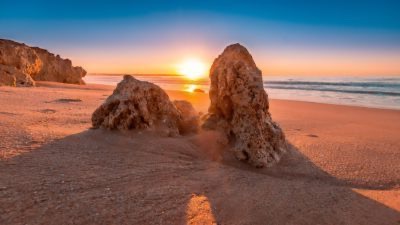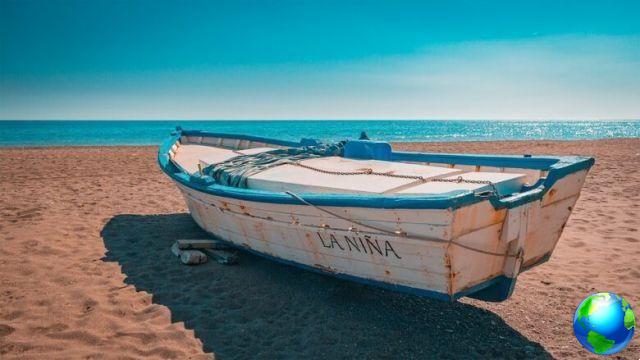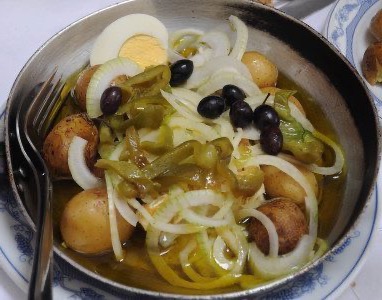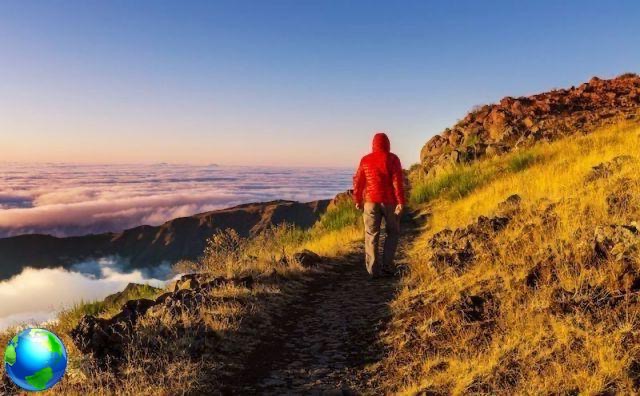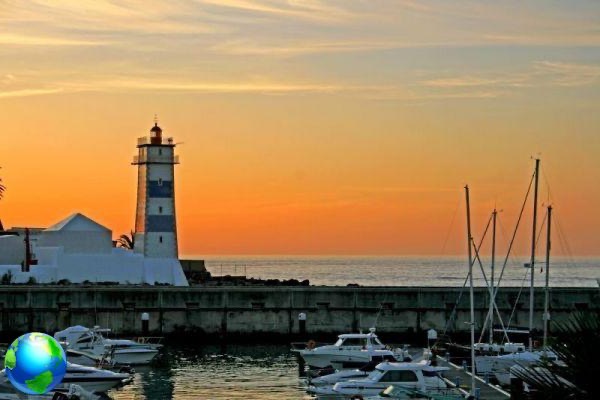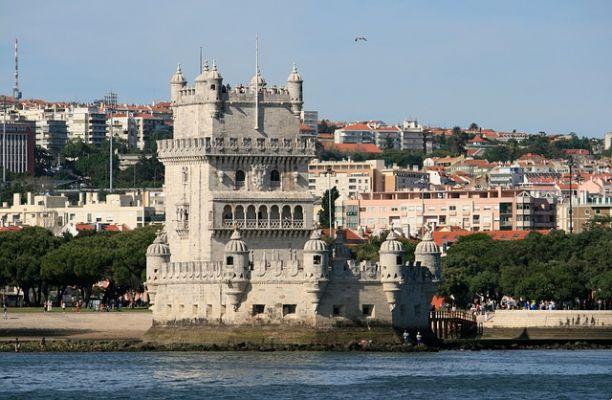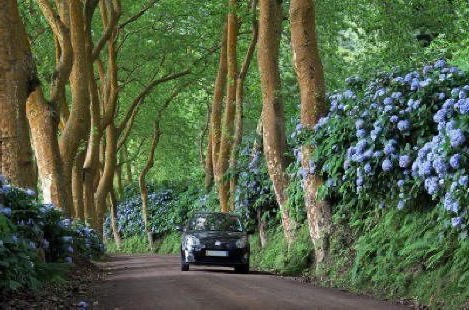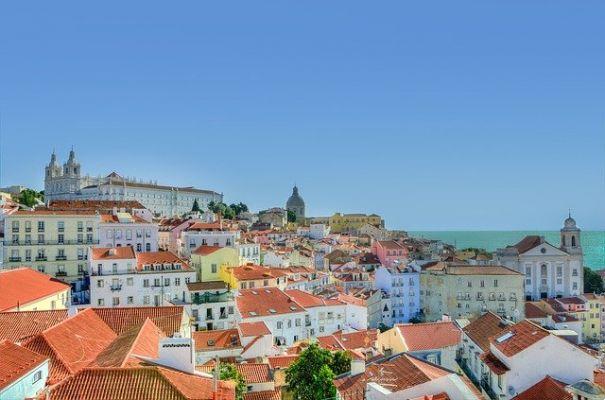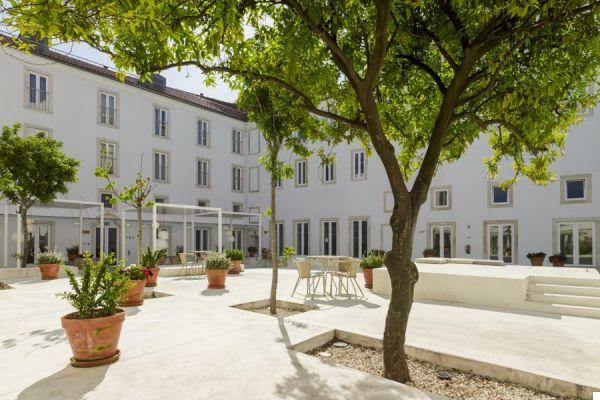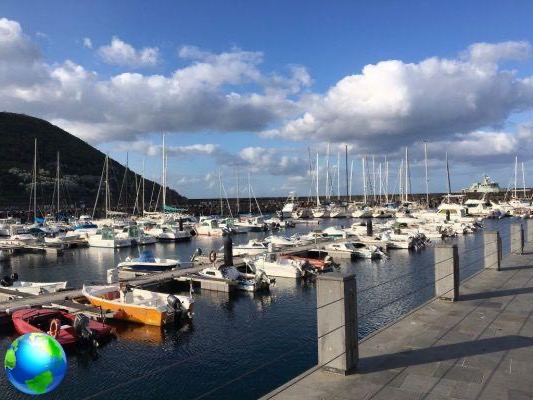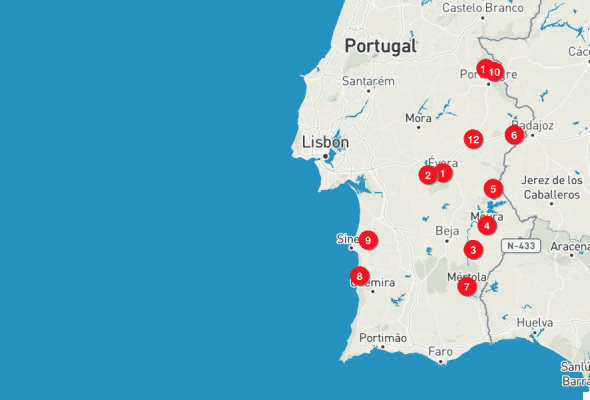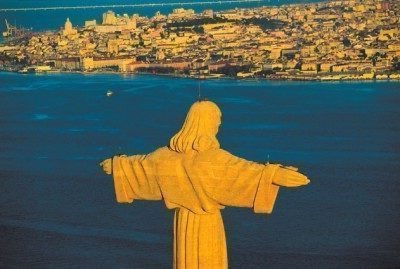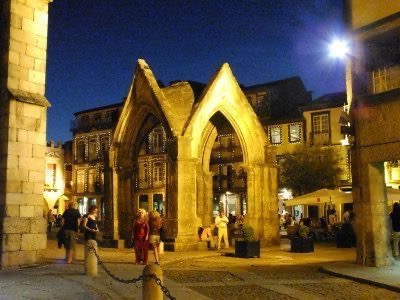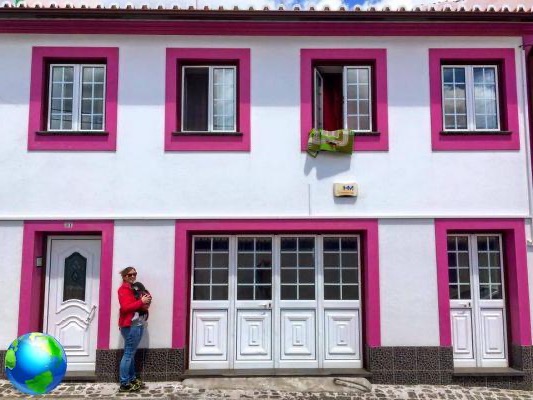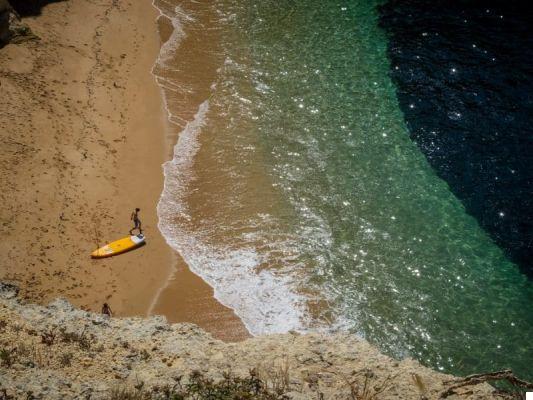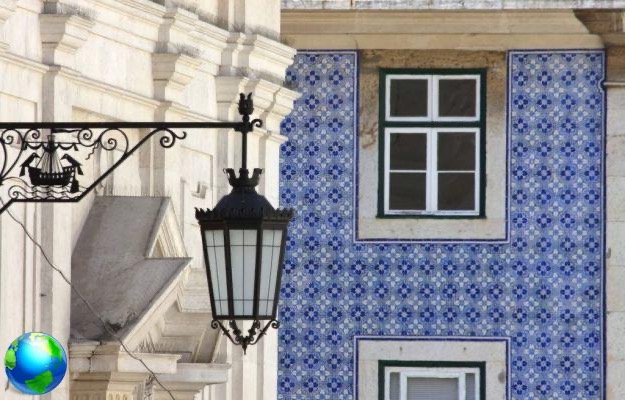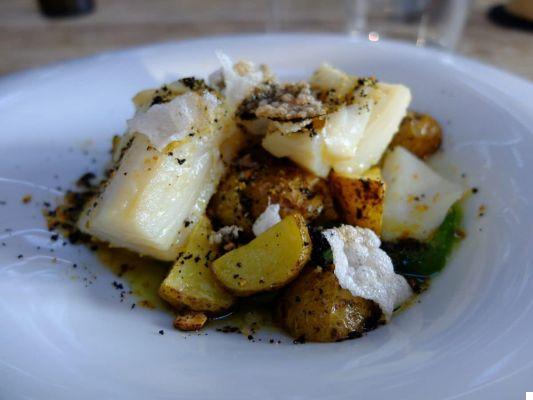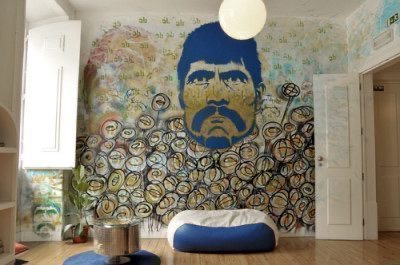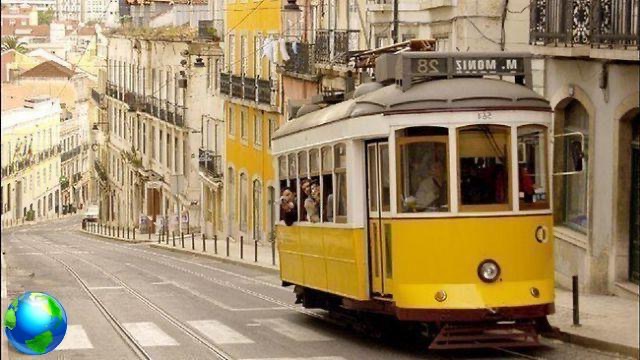The first thing that strikes you when you arrive on any of the 9 islands of the archipelago Azores it is green. There is green everywhere, incredibly luxuriant subtropical vegetation, interrupted only by the cobalt blue of the hydrangeas, the symbolic flower of the island. Wanting to try to define them, I would say that they are a mix of Iceland, Ireland, Hawaii, New Zealand and the Canary Islands. The nature is spectacular and the green is as far as the eye can see, up to the horizon or up to the blue of the Atlantic Ocean. The Azores are a paradise for those who love active holidays, walking and trekking, with one dense network of paths well marked that crosses the landscape and leads travelers to discover every corner of the islands. Another thing that drove me crazy about the Azores is that there is always the possibility to swim: in the many hot springs, under waterfalls, in the many natural lava stone pools or in the sandy beaches. Apart from this, it is also possible to do many water sports such as surfing or diving as well spot whales and swim with dolphins. What more could you want? In this article I talk to you about all the things to see in the Azores that I consider unmissable in the most visited islands: Sao Miguel, Terceira, Sao Jorge, Pico and Faial.
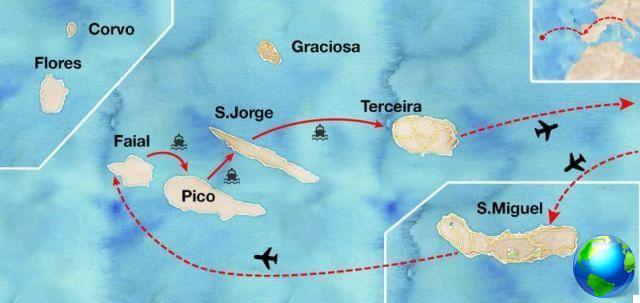
What to see in Sao Miguel (Azores)
Seven Cities Lagoon
The first thing to see in Sao Miguel in the Azores is definitely there Seven Cities Lagoon, which is also one of the most photographed spots in the Azores. It is a lake formed in the mouth of an ancient crater; inside the latter, there is a bridge that divides it in two, separating the green waters from the blue ones. The best view you can get from View of the King Viewpoint which is located at 550 meters above sea level: the view from here is nothing short of spectacular! From Miradouro you can then go down to the town that rises in the crater, Sete Cidades, to make a kayak tour on the 2 lakes or more simply to drink a lakeside coffee at Caffè Green Love.
Lagoon of Fire
Another place to see in Sao Miguel is Lagoon of Fire, a lake in the crater of a volcano reachable with a beautiful trekking (medio) in circa 4h A/R part of Lagoa do Fogo Beach (path PRC 02 SMI) and crosses a magnificent forest. Returning from the trek you can stop for a refreshing bath a Agua d'Alto beach, a beautiful sandy beach where there is also a kiosk to eat / drink something.
If you don't have a car, you can take part in a8h excursion that starts from Ponta Delgada and includes both Lagoa des Setes Cidades and Lagoa do Fogo. Here you will find all the info and you can book.


Furnas
La Furnas valley it is definitely one of the areas to see in Sao Miguel (Azores). It is a valley protected from the wind thanks to the intense green walls of the crater, which is why there is a humid and fertile microclimate here. Around the caldera there are fumaroles and 22 thermal water springs that have made it famous as spa for the rich since the 1700s sulfur springs near the village of Furnas the locals cook the famous cozido (a kind of boiled meat). Also not to be missed in the area Terra Nostra Park (one of the most beautiful parks in the Azores), the park It kills Jose of the Song e Our Lady of Victories. If you don't have a car you can reach it by taking part in an 8h excursion starting from Ponta Delgada.
Caldeira Velha
As you have already understood, Sao Miguel (as well as the other islands of the archipelago) is rich in thermal springs and one of the most famous is certainly Caldeira Velha, located 7 km from Ribeira Grande. Here you will find a large bathtub and several other small natural pools immersed in a tropical landscape; the water is at 37 ° and every day they organize guided visits to the upper part of the waterfall where the source is located. Admission is subject to a fee.


Ponta Delgada
The "capital" of the Azores it has 18000 inhabitants, and is the only real city in the archipelago and is definitely worth seeing if you are in Sao Miguel. If you feel like doing some social life and eating in best restaurants on the island Ponta Delgada is definitely the right place! The town, however, is very nice, with a part of the pedestrian center, and has several parks that are definitely worth a visit. One is the José do Canto Garden, set up in English style, but also the Jardim Antonio Borges, a beautiful municipal park full of ficus caves and ponds.
Islet of Vila Franca do Campo
Located in front of the town of Vila Franca do Campo, about 1 km from the coast, this small island is what remains of the crater of a submerged volcano. It is considered one of the major tourist attractions of São Miguel, especially since one of the competitions of the Red Bull Cliff Diving - the world championship of diving from the rocks. The crystal clear water and the small but lovely beach are great for swimming and diving. In summer the boats (5 euros return) depart from the marina every 2 hours, but as it is a nature reserve, the number of visitors per day is limited. If you are a sporty minimum you can reach it by kayak starting from Vila Franca do Campo and stop there to snorkel too. Here you will find all the info to book this excursion.
Swim with dolphins and / or spot whales
Among the things to do in the Azores I definitely include this activity !! More or less in all the islands of the Azores it is possible to see many Dolphins (sometimes even whales) as soon as you leave the coast. From Sao Miguel (but also from Pico) it is also possible "Swim" with these magnificent animals. Since it is open sea, you go out with Zodiac inflatable boats from about 15 seats and the activity consists in intercepting the dolphins and positioning yourself along their trajectory (they are not given anything to eat! It is an absolutely sustainable activity) and then descend in the water with the mask to see them pass under you and around you. Maybe I love dolphins so much, but for me it was really exciting !! Clearly you are diving into the ocean, in the open sea, so don't be afraid to see only the deep blue below you. I booked this activity with Civitatis and I was very happy. The activity lasts half a day, costs 75 euros and includes briefing, wetsuit, mask and guidance from a marine biologist, insurance and drinks. Alternatively you can participate in a boat ride to spot whales. The excursion lasts 3h.


What to see in Terceira (Azores)
Angra do Heroismo
Angra do Heroismo is by far the most beautiful city to see in the Azores and was declared a UNESCO World Heritage Site in the 80s, after the reconstruction took place due to the strong earthquake of 1980. For long periods Angra was the most important port of reference on the Atlantic trade routes and the numerous palaces and sumptuous constructions recall even today these years. Lose yourself in the colorful alleys of the town, visiting the Cathedral of the Sé, Palacio Bettencourt and Church of Mercy overlooking the harbor. From the right end of the city beach you can go up to the vulcano Monte Brasil with a nice trek of about 2 / 3h (medium- path PR04-TER) which will also take you to different vantage points from which you will have a beautiful view over the town of Angra.
Trekking south Serreta and swimming pool di Biscoitos
Another very nice trekking to do in Terciera is that of Monte SerretA (path PR 03 TER) which starts just above the small village of Serreta. It is a medium path (you climb halfway up - duration 3h), circular, in which it is also possible to make a mini-detour to see and swim in the pond, a beautiful volcanic lake located on the top of the mountain. During the trek you will pass through a magnificent redwood forest and several vantage points from which you can see the coast. After the trek, treat yourself to a well-deserved swim in the beautiful natural pools of Biscoitos, in the north of the island.
Two other beautiful treks to do in Tarceira are the Rocha do Cambre (path PR 06-TER, medium, 3h) and the Fort of Sao Sebastiao, which runs along the southeast coast (path PR 05- TER, easy, 2h and 30 '). Alternatively, you can rely on an agency and participate in one of the different trekking tours they organize. Here you will find all the info and how to book.


Algar do Carvao and Gruta de Natal
The center of the island is characterized by the remains of the huge Caldeira de Guillerme Moniz and here are the unmissable evidence of the island's geological activity. First of all the magnificent Algar do Carvao, a must see place in the Azores and one of the most amazing places I have ever seen! We are talking about the magma chamber of the cone of a volcano. You enter from the cavity by entering from a lateral duct and when you arrive you really get the impression of being in the center of the earth. Absolutely unmissable! Not far from there, there is then Grotto of Natal, where they will give you a helmet to go to the discovery of the lava tunnel (admission 9 euros which includes both caves). You can also see them both by participating in aexcursion in 4 × 4 lasting 3 and a half hours (with pick-up from your hotel).
Serra do Cume and Praia da Vitoria
Vitoria Beach it is not as glamorous as Angra, but it is the city where most of the festivals in the Azores take place in the summer (Terceira is also called the "party island"). In particular then, in the season between May and October, there is the famous good party (= courageous party), in which the toreade, or fighting with bulls. 4 bulls are pushed to a delimited area of the village alleys or to the beach where they are teased by these brave young men (each bull is held with a rope of 6 shepherds dressed in traditional clothes). Attention, it is not a bullfight, the bull is not hit and injured and above all it is not killed afterwards !! I saw it and honestly it was nothing particularly shocking. Every day the location of the toreada changes (it's always at 18 pm-18pm) so you'll have to ask around for the program. If you are in the Praia da Vitoria area, take a trip to the viewpoint of Summit Mountain and you will have under your feet almost half the island with its mosaic of pastures.
You might be interested in these organized treks in Terceira


What to see in Sao Jorge (Azores)
Trekking Faja da Caldeira de Santo Cristo
This trek that starts in the mountains (from Serra do Topo) and ends on the sea, at the Faja da Caldeira de Santo Cristo and there Faja dos Cubres is one of the most scenic treks to do in the Azores (path PR01-SJO). Except the last part, it is all downhill, and it is not a circular route so you will have to get a taxi to take you to the beginning of the path in Serra do Topo and arrange to be picked up after about 5h. Two Covers Girdle. In 5h you will have all the time you need to enjoy the trek, make yourself a waterfall bath that you will meet halfway along the path, and have lunch overlooking the sea in Faja de Santo Cristo. It is 10 km and the only bar you meet is almost at the end so you will need to have water and food with you. The views of the coast and the sea that you have along the path are truly magnificent.
Being Sao Jorge practically all mountainous, most of the treks are of medium or difficult level (if you want it is possible to cross, in several days, the whole island thanks to a path that runs along the mountain range that crosses the island from east to West).
Piscine di Faja do Ouvidor
Another beautiful place to see in the Azores is the natural pool of Faja do Ouvidor .i are located on the north coast of the island and are set inside a kind of natural canyon. You have to walk 10-15 'to reach them but it is absolutely worth it! Near the beginning of the path that takes you to the pools there is a restaurant and a bar where you can have lunch.


What to see in Pico (Azores)
Trekking on the Pico
The Pico Alto (commonly called Pico - 2351 mt) is the highest mountain in Portugal (it is actually an active volcano). The ascent to the summit represents one of the heavier treks in the Azores, but also one of the most beautiful because the view from the top is truly incomparable. If you decide to climb it, know that it will take you all day and you will have to leave early in the morning, under penalty of visibility (you can't see anything because fog and frost rises which will wet you all and will not make you see the wooden poles that mark the route of climbing.). heavier treks in the Azores: at least calculate 4 hours to go up and 3 to go down. In the meantime, the weather will have changed several times, so you will have gone from sunscreen to avoid sunburn, to the incessant rain of two hours ..! everything is possible here! On the Pico only 200 people are allowed at the same time both for safety reasons and because it is a Nature Reserve. In high season (August) there is a lot of demand so the only way to be sure to get on (without having to wait hours before someone gets off) is to participate in a guided excursion (which must be booked at least the day before). costs 50 euros more (in addition to the 20 required for everyone). Some start to climb around 1-2 at night to see the sunrise on Pico, but in the dark the climb is even tougher. Outside of the high season, if you start climbing by 6-6: 30 you shouldn't have any problems. The starting point is there mountain house. Here you pay, they register you and give you a GPS that you can use in case of loss or if you feel bad to be able to recover by helicopter.

Caleheta de Nesquim and the south coast
Moving in the eastern part of the island means getting away from the typically tourist routes. Enjoy the atmosphere of the small port of Nesquim Calheta (there is also a beautiful natural pool), an authentic fishing village where a whaling station once also existed. The road to get there is just as beautiful.
Trekking among the vineyards in Santa Luzia
This trek (path PR1-PIC - 10,5 km) it's easy because it's all flat, and crosses the numerous mosaic-like vineyards that the inhabitants of Pico have painstakingly fashioned over the centuries and bordered with low walls made of volcanic stones (just like in Lanzarote). Since 2004 UNESCO has recognized this as a World Heritage Site. A few kilometers from Santa Luzia, also on the north coast, there is also Furna de Santo Antonio, the most beautiful natural pool on the island, originating from a lava flow.
Cell Bar
This bar-restaurant located on the sea, a few kilometers outside Madalena, has a very particular and definitely very beautiful location. It is all in capsule-shaped wood and in 2016 it won the Building of the year architecture award. The drinks, the tapas, the main dishes and above all the view are also very deserving. Go there at sunset to see the sun disappear behind the island of Faial which is right in front. The prices are slightly higher than the average, but absolutely affordable (for dinner they spend around 30-35 euros per person).
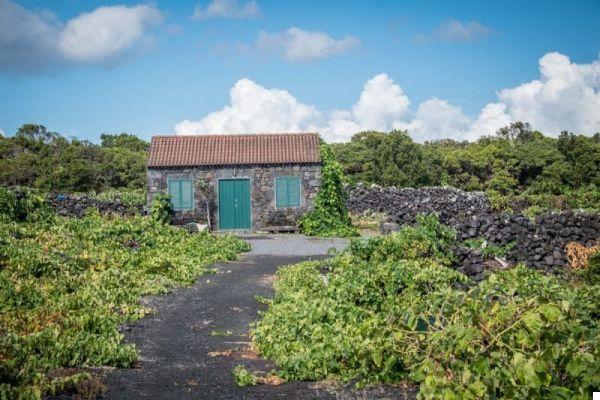


What to see in Faial (Azores)
Trekking da Cabeco Verde a Capelinhos
One thing to see and do in Faial is the Capelinhos. This trek is wonderful because it crosses two extremely green calderas (the Cauldron and Cabeco do Canto), before arriving at the lunar and desert landscape of Capelinhos, or vulcao as the locals simply call it. It is a medium trek with several climbs (path PRC 01-FAI) which reaches the most recent volcanic formation of the Azores. The ashes of several eruptions that occurred between 1957 and 1958 covered the territory in the western part of Faial destroying the livelihoods of many people and creating this surreal landscape. The old lighthouse it is still immersed in the ashes up to the 1st floor and a Visitor Center has been built nearby which offers information on the origin of the Capelinhos and on volcanism in general. After the trek, which is quite tiring, follow the road that goes down to the left of the lighthouse to go for a swim in the natural pools which are located immediately below.


Caldera
Right in the center of the island of Faial is this impressive crater called la Caldera, with its infinite shades of green. Thanks to path PRC 04- FAI (7 km - about 3h) it is possible to go around the rim of the crater and observe practically the whole island from there from above.
Horta and the Peter Cafe
The capital of Faial (6000 inhabitants) is one of the 3 most important centers of the Azores, even if it is very small compared to Ponta Delgada and Angra. It's a nice little town and that's where the Peter Coffee, an institution of the Azores, where divers, whale watchers, but above all sailors returning from the long Atlantic crossing meet.

You might also be interested in these other articles I wrote about Portugal:
- Lisbon: what to see in 3 days
- Unusual Lisbon: 15 places to see to feel local
- Where to sleep in Lisbon: better neighborhoods and hotels
- How to organize a trip to the Azores: when to go, how and where
- Alentejo (Portugal): what to see
- What to see in the Algarve: a road trip in southern Portugal
- Madeira: what to see on the island of eternal spring





